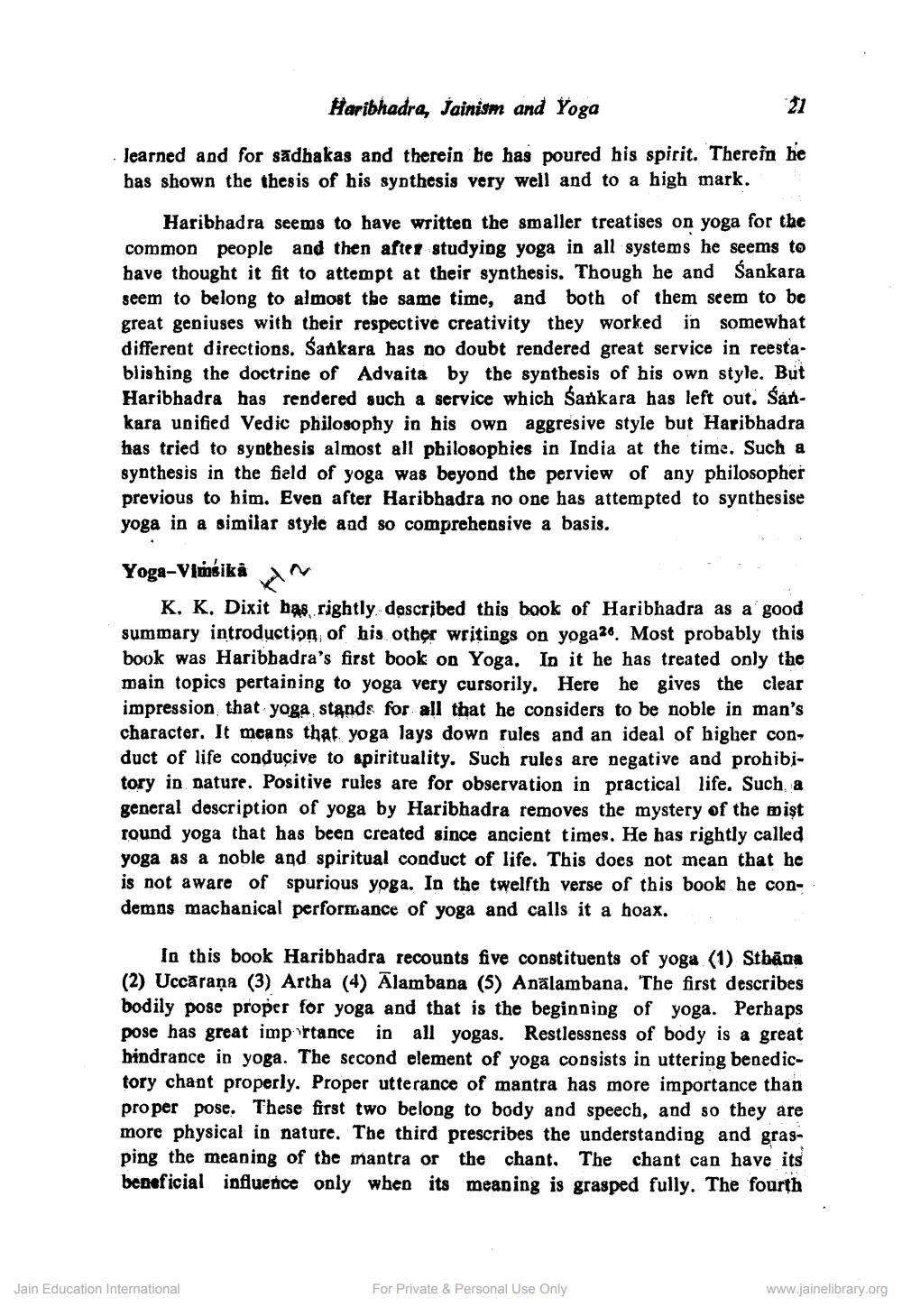________________
Haribhadrą, jainism and Yoga
learned and for sādhakas and therein be has poured his spirit. Therein he has shown the thesis of his synthesis very well and to a high mark.
Haribhadra seems to have written the smaller treatises on yoga for the common people and then after studying yoga in all systems he seems to have thought it fit to attempt at their synthesis. Though he and Sankara seem to belong to almost the same time, and both of them seem to be great geniuses with their respective creativity they worked in somewhat different directions. Sankara has no doubt rendered great service in reestablishing the doctrine of Advaita by the synthesis of his own style. But Haribhadra has rendered such a service which Sankara has left out. Sankara unified Vedic philosophy in his own aggresive style but Haribhadra has tried to synthesis almost all philosophies in India at the time. Such a synthesis in the field of yoga was beyond the perview of any philosopher previous to him. Even after Haribhadra no one has attempted to synthesise yoga in a similar style and so comprehensive a basis.
Yoga-Vimśika An
K. K. Dixit has rightly described this book of Haribhadra as a good summary introduction of his other writings on yoga26. Most probably this book was Haribhadra's first book on Yoga. In it he has treated only the main topics pertaining to yoga very cursorily. Here he gives the clear impression that yoga, stands for all that he considers to be noble in man's character. It means that yoga lays down rules and an ideal of higher con, duct of life conducive to spirituality. Such rules are negative and prohibitory in nature. Positive rules are for observation in practical life. Such, a general description of yoga by Haribhadra removes the mystery of the mist round yoga that has been created since ancient times. He has rightly called yoga as a noble and spiritual conduct of life. This does not mean that he is not aware of spurious yoga. In the twelfth verse of this book he condemns machanical performance of yoga and calls it a hoax.
In this book Haribhadra recounts five constituents of yoga (1) Stbāna (2) Uccāraṇa (3) Artha (4) Alambana (5) Anālambana. The first describes bodily pose proper for yoga and that is the beginning of yoga. Perhaps pose has great imprtance in all yogas. Restlessness of body is a great bindrance in yoga. The second element of yoga consists in uttering benedictory chant properly. Proper utterance of mantra has more importance than proper pose. These first two belong to body and speech, and so they are more physical in nature. The third prescribes the understanding and grasping the meaning of the mantra or the chant. The chant can have its beneficial influence only when its meaning is grasped fully. The fourth
Jain Education International
For Private & Personal Use Only
www.jainelibrary.org




